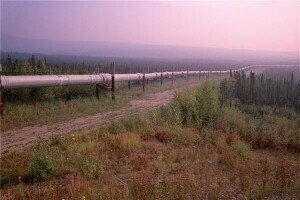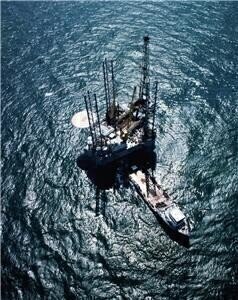Fuel for Thought
Oil Fields of the Future – What Can We Expect?
Dec 16 2014
Although drilling for oil offshore started in the late nineteenth century, most of the wells were within sight of land, and many were no more the wells sited on boardwalks over the water. Offshore drilling, as we know it now, only started in the 1950s, but this was still carried out in relatively shallow waters usually close to land. By the 1980s, new advances in seismology and platform technology allowed oil to be produced from much greater depths, and the move into deep-water drilling began. Since then, the number of deep-water oil platforms has increased around the world as consumers and industry require ever more oil.
Deepwater drilling
But this increase is not without incident — both through loss of life and environmentally. 167 workers died when the Piper Alpha oil platform in the North Sea was destroyed by explosion and fire in 1988. And there have been environmental disasters too — headlines were made when the Deepwater Horizon oil spill occurred in the Gulf of Mexico in April 2010 with the loss of eleven lives.
But no one can deny that under-sea drilling will continue to play a major role in the energy mix, at least until the oil runs out. As long as we need oil, someone will find it and pump it out. That means oil exploration going into deeper and ever more remote undersea locations. But how can technology help make offshore oil production safer for the workers and the environment, whilst reduce incidents such as this recent natural gas leak in Gulf of Mexico?
New technology in the Oil Industry
As offshore drilling moves to deeper and more remote locations, the risks of environmental impact and disaster will increase. One of the ways of mitigating risk is by using sensors to monitor and report on the subsea infrastructure — as investigated by a team at Aberdeen University. Subsea sensors are presently hardwired using wires or optical fibres, which incurs a cost and adds a component that can fail.
Sensors currently being developed will be able to monitor several variables and relay the information wirelessly to the surface or a master control module. By using intelligent, wireless sensors, the system will be able to react to a sensor failure and still relay information to the surface. If a wired technology is used and a sensor breaks, then data might not be able to bypass the fault — meaning data and a layer of security is lost from the system.
Methods to power the sensors using temperature differences or water movement are also being investigated — this will reduce the risks incurred when system maintenance is required. Current sensors are limited in measuring physical data such as temperature or pressure and basic chemical data. Sensors being developed could provide more detailed chemical information — this might, for example, provide a forewarning that the oil network is being compromised through corrosion.
Digital Edition
PIN 25.1 Feb/March
March 2024
In This Edition Safety - The technology behind the ION Science Tiger XT - Safety with ammonia and LOHCs as hydrogen carriers Analytical Instrumentation - Discussion on new tribology te...
View all digital editions
Events
Apr 28 2024 Montreal, Quebec, Canada
Apr 30 2024 Birmingham, UK
May 03 2024 Seoul, South Korea
May 05 2024 Seville, Spain
May 06 2024 Riyadh, Saudi Arabia



















